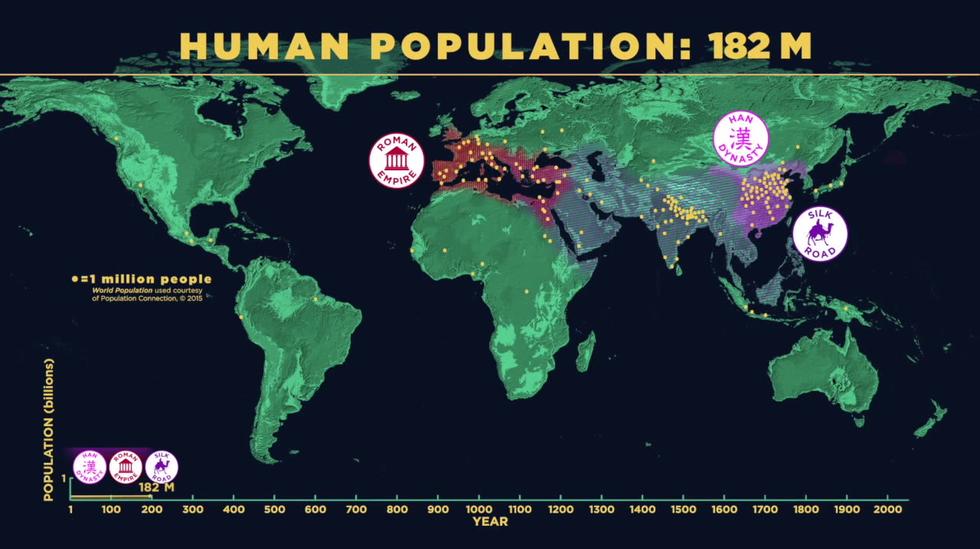“It took us 200,000 years to reach one billion people on earth – and only 200 years to reach seven billion people.”
In recent years, overpopulation has become a hot topic in relation to climate and environmental debates, and few instruments provide perspective other than animated presentations on the topic.
Researchers at the American Museum of Natural History have created a video showing how we have gone from a species of less than a million hunters and gatherers to living huddled in tall buildings in large cities.
Also read: This is the population of your municipality in 2040
The Black Death was the only exception
Technological progress is undoubtedly the biggest impact on population growth. The first leap was already visible when our ancestors switched from hunters to farmers just after the last ice age.
Other innovations amplified growth to greater levels. After the industrial revolution occurred and modern medicine was introduced, population growth skyrocketed at an alarming rate.
Article continues below advertisementArticle continues below advertisement
The only real decline in population growth occurred in the 14th century, when the Black Death was at its worst. Otherwise, you will see a steady and increasing upward curve. Even events like world wars or Genghis Khan's rampage (He is said to have killed many people eleven percent world population over their lifetime) is on a stable curve.
Article continues below advertisementArticle continues below advertisement
Also read: For the first time, the EU's indigenous population is shrinking
Leveling
Undoubtedly, the jump in the number of people from one to seven billion people in a short period of time is the most surprising part of the video. Last year alone, the growth reached 72.6 million people.
However, annual population growth seems to have reached its peak. This is because the number of children per couple has decreased somewhat recently. Researchers predict that growth will plateau and eventually stop at eleven billion.
What is more uncertain is whether the earth as we know it today will be able to accommodate eleven billion people with ever-increasing consumption. If more efficient ways of producing, including food and electricity, are not discovered, we will be in for a bit of a shock if we reach the eleven billion people on earth.

“Music maven. Evil pop culture lover. Unapologetic creator. Friend of animals everywhere.”






